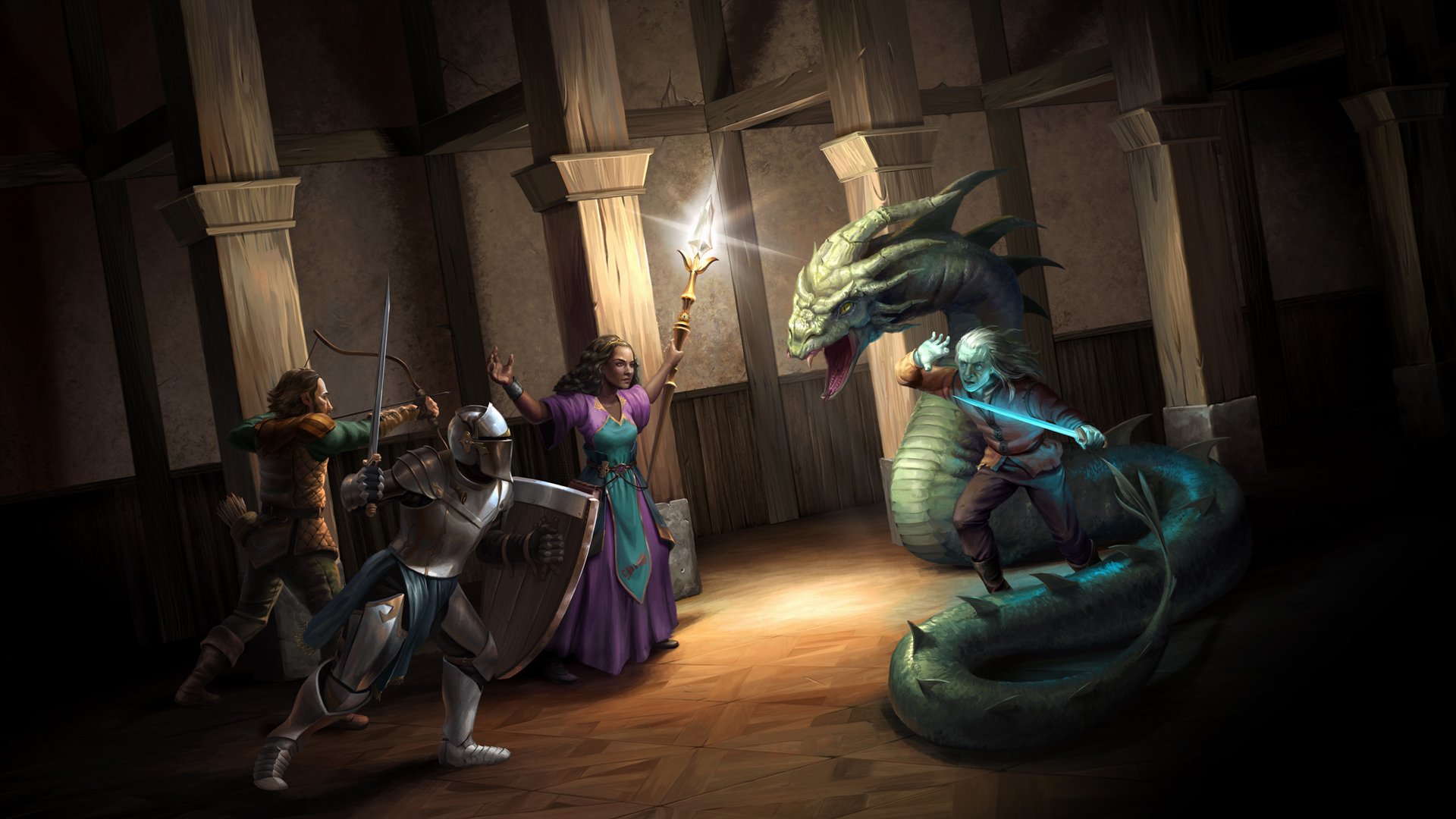I first found out about Jeff Vogel and his company Spiderweb Software in 2011 when my husband decided to make his own indie-game and started reading about every indie-developer out there. Jeff Vogel was working on the Avernum series back then, and as I pretty much adored story-driven turn-based RPGs like Baldur’s Gate, Icewind Dale, Arcanum, etc., I knew exactly that he was making my kind of games. But unfortunately, I was too pregnant to sit in front of a computer for 50+ hours just to follow a good story. So I laid down instead to read from my list of lovely books, long neglected due to games.
Years passed, I raised the boy (and another) and one day I came across to a great article on Gamasutra titled “Why All of Our Games Look like Crap”, thanks to which I heard about the Queen’s Wish: the Conqueror. This time, I knew, the time was finally right.
It gives you everything you can expect from a story driven game
The game has most of the old school turn-based RPG elements in it, but with a few tweaks that I will explain below. It gives you everything you can expect from a story-driven game. The path, in general, is very story-rich, the NPCs that play a role in this story are all well thought of, the places you visit are intriguingly described, there are lots of side quests, exploration, and unlocking of new areas to do.
I played as the so-far-over-shadowed-by-her-siblings princess, eager to prove herself to her mother, the Queen. She gave me a mission to ensure the future of Haven, the empire our dynasty rules: to regain a land Haven lost: Sacramentum. Once I landed the island, or call it the continent, passing through a portal, I discovered that I needed to deal with not only the three nations opposing Haven (and not particularly fond of each other either) but also the monsters invading it.

So dealing with monsters is the usual dungeon crawling side of RPGs that may not require much elaboration. The important thing here is that you always have to beat the boss of each dungeon in order to beat the dungeon. If you leave it unfinished, you find it defensed up next time you come. I read some Steam reviews that this was frustrating for some people who enjoyed Spiderweb Software’s previous games, but it didn’t bother me. I also found a story value in it, say in fact if you really left the Boss alive, he would have muscled up while you are gone, wouldn’t he?
The real novelty about this game is the town building aspect. As you fight and regain towns in Sacramentum, you get to build them as well. You get to decide which shops to build, depending on your party’s priorities. So you beat dungeons, you win resources. With resources, you build shops. Shops give you better equipment. You use that equipment to beat more dungeons. Of course, there is looting too, but the shops really produce very unique items, both useful and also very much fun to discover.
OK, it does not require as deep strategy as town building games dedicated to this aspect alone do, but still gives a very interesting purpose to all the battles. It works in perfect harmony with the story as well.
you really feel that your decisions as a player deeply influence the story branching.
The land is vast, and there are many side quests, which frequently pose interesting questions to what kind of a person you are. And you really feel that your decisions as a player deeply influence the story branching.

I played at normal difficulty. At this level, combat is rather basic but enjoyable. The party takes turns and we shoot using our weapons and abilities. Having to finish each dungeon in one go does require some tactical strategy though. You may need to change your party if you find a particular dungeon difficult. The skill tree, of course, allows further customization. You can also unlearn abilities. This is called “shifting skills”.
Let me refer back to the article I read that brought me to play this game in the first place. Does the game really look like crap?
Well, it’s not the best looking RPG out there, that’s for sure. However to call it crap is not fair. The main problem, I would say, is the lack of art directorship. The game is full of little pieces showing nice or at least decent art, but there is something off in how they are all brought up together. It is a bit tiring to the eye sometimes, for example, when the interactable characters or chests or secret doors get lost over certain terrains.
It’s not majorly important though. You get used to it. You will play this game mostly for the story and get fully carried away with it.
I think indie-devs should be allowed to make their games the way they wish. Isn’t this exactly what indie means? If the developer is a coder first, then he can make a roguelike with ASCII graphics, without having to worry about 3D character animation. If the developer is an artist first, he can make a point and click adventure using a basic game engine to bring you a visual novel never seen before.

the main artisanship here is story-telling and word-smithery.
Spiderweb Software is a family business, consisting of Jeff Vogel and his wife, and the main artisanship here is story-telling and word-smithery. He is not, nor claims to be, the best art director out there. He also did not hire one, for reasons he discusses at length in the mentioned article. But he makes the games that he wishes to make. He’s been making them for 25 years.
Now, look. Jeff Vogel is a very outspoken person. He is an “expert blogger” by all senses of the word, he writes for game magazines, he writes for his own blog “The Bottom Feeder”, he talks at game conventions, gives interviews, tweets, and just generally speaks out at every occasion. He speaks about his own games, other people’s games, and the game industry as a whole. He is, to quote his own words, “older than the industry he works in.” He is, in short, a famous indie-dev. As is the case with most celebrities, there is some level of controversy necessarily involved. People feel compelled to have an opinion about his games. I believe this is why there has been such a big fuss about it.
As I said, it’s not majorly important. He is after all, “Indie development’s self-declared Crazy Old Uncle in the Attic”, quoting an expression directly from his blog, full of amazing stories. So what the game looks a bit out of fashion? It shouldn’t stop from any keen story hunter(ess) from enjoying it.








Not being a smartass, but you incorrectly stated that both Baldurs Gate and Icewind Dale were both turn-based combat. I wish they were turn-based, but unfortunately they’re both real-time.
Arcanum, however, is one of my absolute favorites. It can be played in both turn-based combat and real-time.
Hi Dave, thanks for dropping in your comment.
I see where you are coming from, but both Baldur’s Gate and Icewind Dale had sort of a hybrid system that I believe cannot be exactly called real-time. They were strictly based on D&D, so even the concept of an initiative roll was there. Both party members and enemies did in fact take turns. But the combat was so fluid that it felt like real time. You could pause the combat at any moment by pressing space and view from the action bar what happened at each turn. There was also an option of auto-pause and you could choose that it pauses after each turn so it becomes properly turn-based. Some call it “Real-time with Pause”, that’s probably more like it. But it’s not incorrect to call them turn-based either.